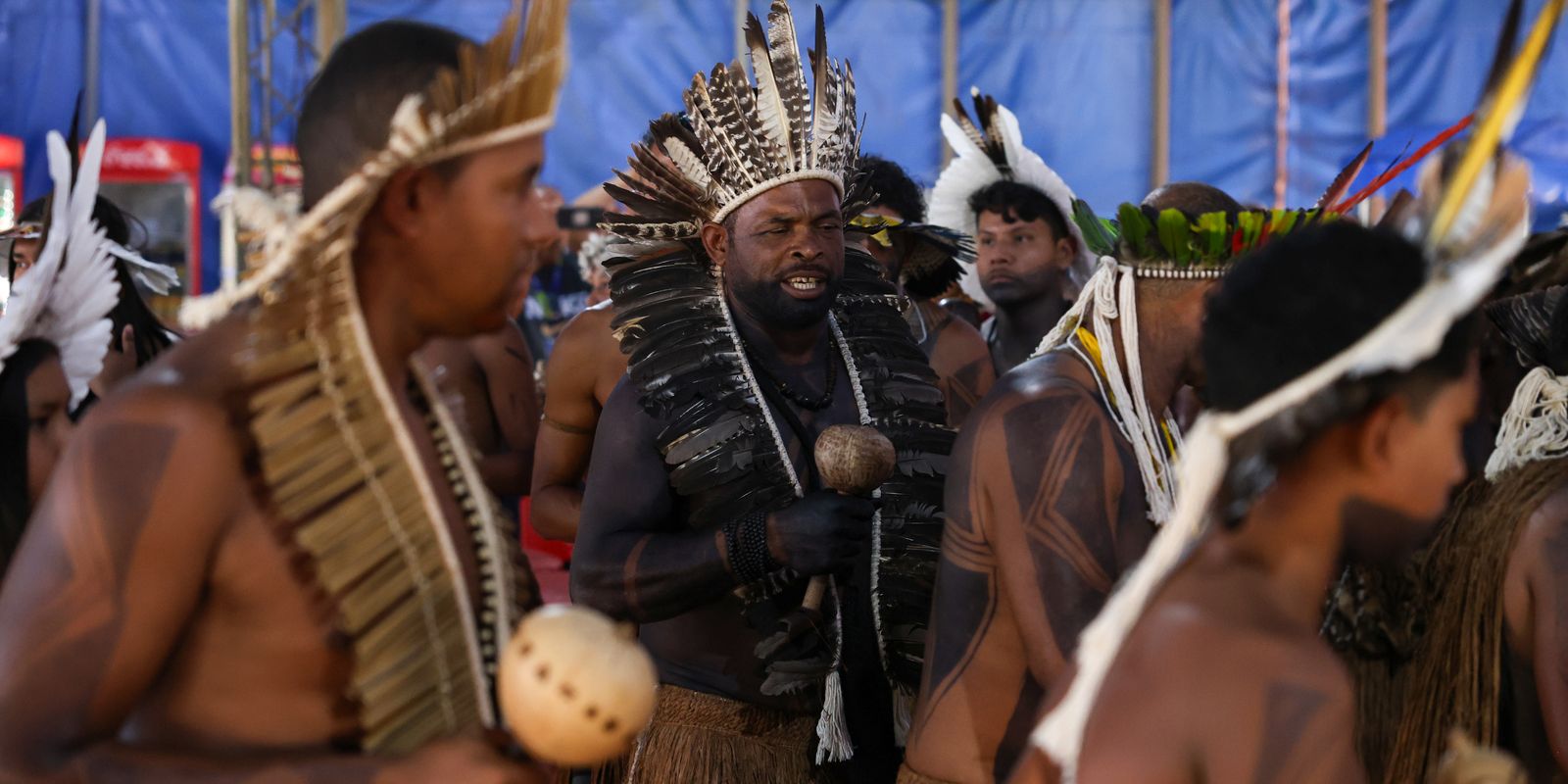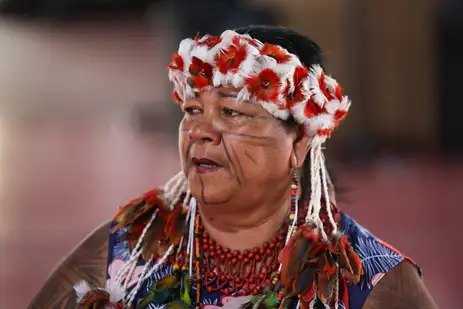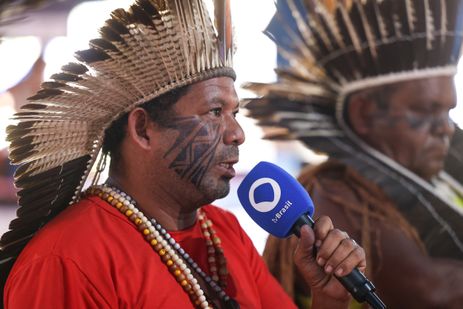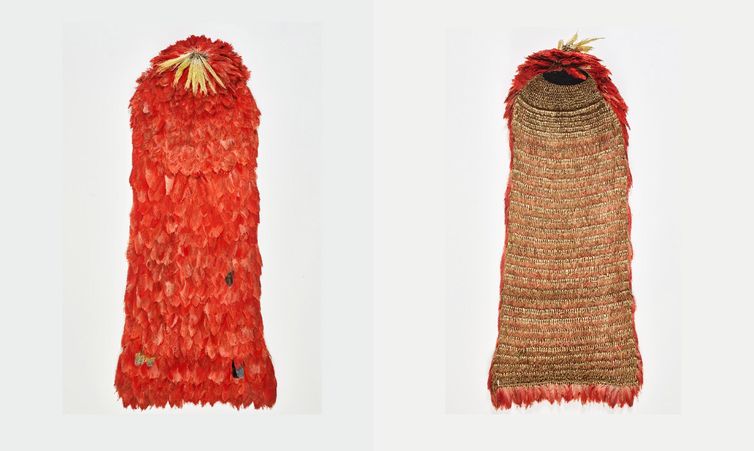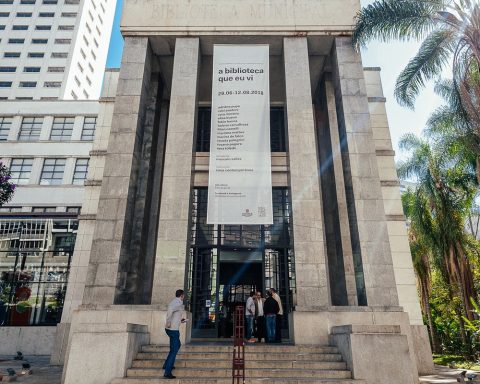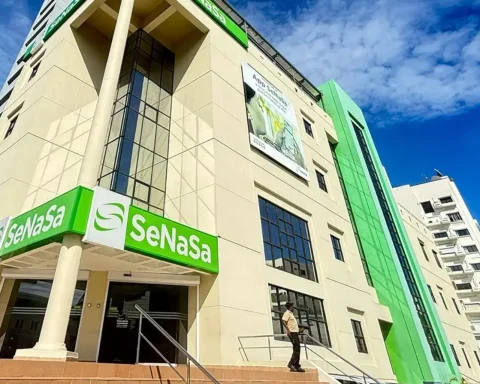“We are the children, grandchildren and great-grandchildren of the Tupinambá mantle”, sang together and danced together, to the sound of rattles, in a huge circle, indigenous children, young people, adults and elders, on the morning of this Monday (9), at Quinta da Boa Vista, in the north zone of the city of Rio de Janeiro.
There were almost 200 Tupinambás, and they were happy. After making a long journey by bus between their territory on the central coast of Bahia and the city of Rio de Janeiro, they prepared to celebrate the return of their sacred cloak, made from the feathers of the guará bird, which had been there for four centuries. exhibited in a museum in Denmark.
The indigenous artifact returned to Rio de Janeiro at the beginning of July, where it is under the protection of the National Museum, in its central library, a few dozen meters from where the indigenous people celebrated on Monday morning.
The Tupinambás, however, had not yet had the opportunity to receive it. This Sunday (8), a small Tupinambá delegation had the chance to visit the cloak, on the museum premises.
The group that had the chance to see the cloak again was made up of descendants of the Tupinambá elder Amotara, who visited the cloak in 2000, when the artifact was taken from Denmark to São Paulo for a temporary exhibition celebrating the 500th anniversary of the arrival of the Portuguese in Brazil.
When she saw the robe at the time, the now-deceased Amotara said she recognized it and began a long struggle to repatriate the ritual garment, which was in the custody of the National Museum of Denmark.
Sunday’s reunion was the first time that the Tupinambás of Olivença, a people who live on the coast of Bahia, and who came on chartered buses to Rio de Janeiro, were able to see the ritual garment, which, for them, is considered an ancestor, an ancient spirit to which their people owe respect, after their permanent return to Brazil.
“Yesterday [domingo] We were fortunate to meet again. He smiled, he was happy, because we were there, seeing him and he seeing us. He brought with him the ancestral strength of a people who were considered extinct. And that is priceless. We are talking about ancestry, memory, strength,” said chief Jamopoty Tupinambá.
The other Tupinambás who came from Bahia are still waiting for the opportunity to meet their sacred elder again, camped in a circus tent in Quinta da Boa Vista, a public park where the National Museum is located.
“We wanted to camp near the mantle, because we need to light the bonfire, say our prayers. We know that where it is, there can be no smoke or fire,” said Jamopoty, adding that the bonfire will be lit near the circus where they are camped.
The visiting procedures are yet to be defined by the National Museum, which is responsible for the integrity of the mantle. While they await the reunion and prepare their rituals to celebrate the return of “their oldest elder,” some of the Tupinambá leaders, including Jamopoty, spoke to the press on Monday.
The chiefs who spoke to the press unanimously agree that the arrival of the cloak is a good omen. The great hope of the Tupinambás of Olivença is that its return represents a definitive step towards the people’s main struggle, the demarcation of their lands, which were delimited 15 years ago.
“We live in a territory that has 347 thousand hectares, in three municipalities, and is home to 8 thousand Tupinambás living from extractivism, fishing, and agriculture. This territory is identified and delimited by Funai [Fundação Nacional dos Povos Indígenas]. We occupy 80% of this territory, because we have retaken it and there are no more obstacles to the Brazilian government signing the decree declaring the Tupinambá people,” said chief Sussuarana Morubyxaba Tupinambá. “The Tupinambá people are here to hold a vigil and a ritual, but we also want our leaders to uphold what is in the Constitution and demarcate the Tupinambá territory of Olivença. We cannot live without this territory,” he argues.
According to the Ministry of Indigenous Peoples, the National Museum is preparing the piece for the Tupinambá ceremonies. One of the indigenous people’s requests is that the cloak be placed upright. During Sunday’s visit, according to Jamopoty, the cloak was lying down.
“He was asleep, he was lying down. When Amotara saw him [em 2000]he was standing. And we always say that we are a people who stand up. Standing up, we know that we are stronger. Lying down, we lose our energy”, explained the chief. “The cloak is an enchanted [espírito que se comunica com os vivos]is our oldest elder. And this enchanted one of ours comes with a message of strengthening and guidance.”
The Tupinambás want the cloak to remain in the National Museum only temporarily and that a museum be built in Olivença to protect it within their own territory. There is also the expectation of repatriating ten other cloaks that remain in the custody of European museums.
“Let’s give this vote of confidence to the National Museum. We’re going to our home [depois das celebrações] and our elder will stay. But it may take a long time, we hope the government will help us make a place where he can be preserved [em Olivença]”, said Jamopoty.
According to the general coordinator of Cultural Promotions at the Ministry of Indigenous Peoples, Karkaju Pataxó, Tupinambá celebrations are planned for this Tuesday (10) until Thursday (12), when there will be a ceremony with the participation of public authorities.
“We are negotiating with the National Museum to offer a guided tour, due to conservation issues. [do manto]. We will see how many people can participate in each visit. We want everyone who came [ao Rio de Janeiro] can have access to the mantle. We intend, based on the guidance of the museum’s technical team, to better understand how this visitation will be, so that there are no inconveniences”, explained Karkaju Pataxó.
Pataxó reported that discussions are underway about how access to the Tupinambá cloak will be possible after the end of the celebrations on the 12th. It is not yet known whether the piece will be on display and, if not, who will be able to visit it.
In a statement, the Ministry of Indigenous Peoples reported that the entire event is being organized in permanent dialogue with the Tupinambá people to guarantee the indigenous people’s rights in relation to the artifact.
“During the three days, the Tupinambá people will hold sacred vigil rituals and visit the cloak, which will be kept in a room in the Central Library of the National Museum. The ceremony is organized by the Ministry of Indigenous Peoples (MPI), in conjunction with the Ministries of Education (MEC) and Culture (MinC). The initiative is being carried out in partnership with the Ministry of Foreign Affairs (MRE) and with the participation of leaders of the Tupinambá people,” the statement said.
Through its press office, the National Museum reported that it does not yet have a defined schedule for visits.
